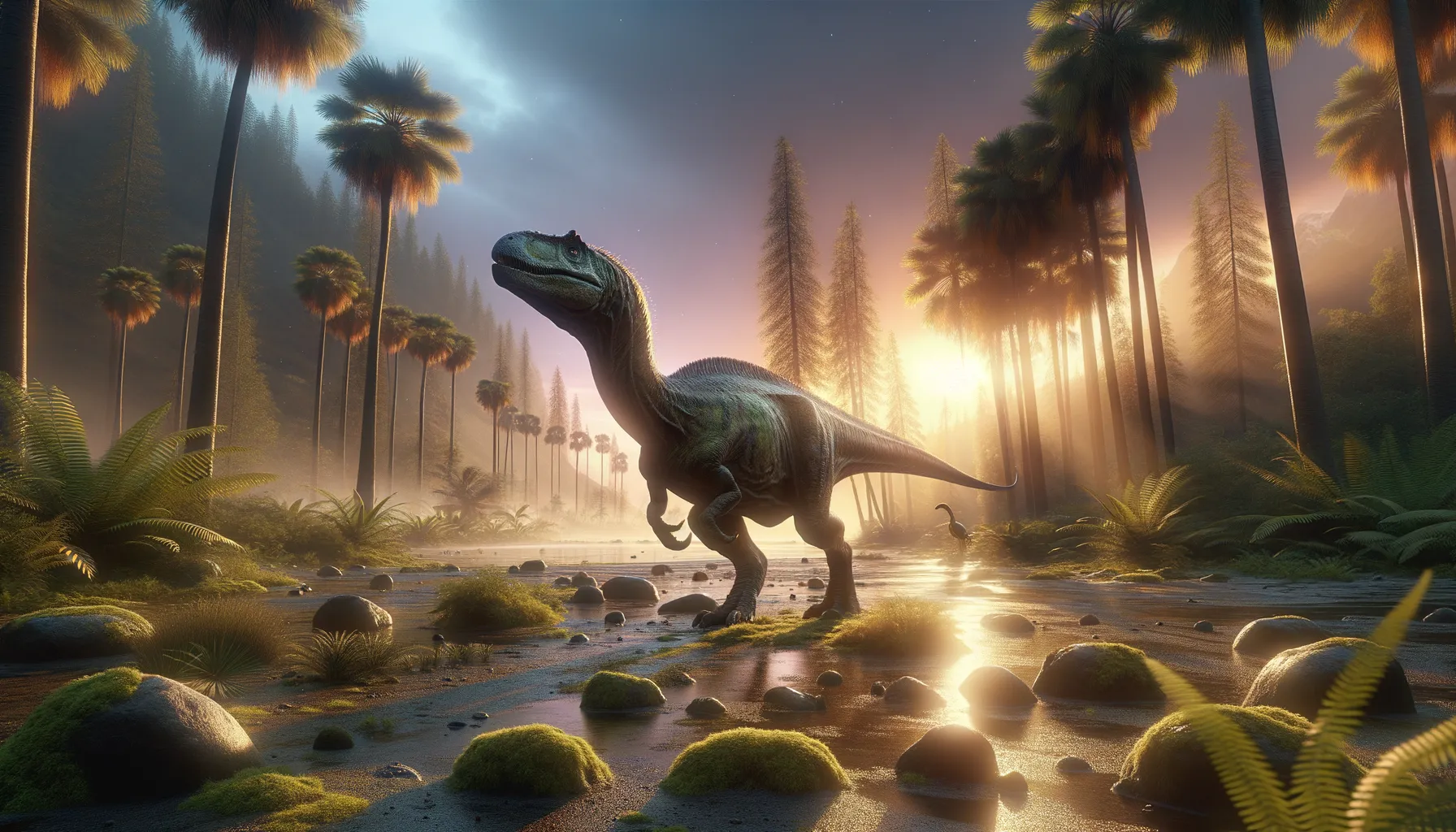
Shuvosaurus
Swift survivor of the ancient world!
Period
triassic
Length
Around 10 to 12 feet long.
Height
Approximately 3 to 4 feet tall at the hips.
Weight
Estimated to weigh around 200 pounds.
Shuvosaurus was a fascinating dinosaur-like creature from the Late Triassic period that shared a resemblance to theropods but belonged to a different group. Characterized by its bipedal posture and lightweight body, it displayed adaptions that suggest a swift lifestyle. Although it lived millions of years ago, its skeletal remains provide intriguing insights into the evolutionary bridge between primitive archosaurs and later dinosaur forms.
Diet
Shuvosaurus was likely a herbivore or omnivore, with its diet possibly consisting of plants, insects, or small animals. Its beak-like mouth could have been used effectively to nibble on a variety of non-meat food sources.
Hunting
Given its likely herbivorous diet, Shuvosaurus did not engage in traditional hunting like carnivorous counterparts. It might have foraged for food instead, utilizing its beak to pick at edible vegetation.
Environmental challenges
Shuvosaurus existed during a time of significant environmental shifts, including climatic changes that impacted food availability. The Triassic period also saw the rise of larger predators, posing a threat to smaller creatures like Shuvosaurus. Survival would have required adapting to rapidly changing habitats and competition for resources. With fluctuating temperatures and emerging competitors, it had to be versatile in its diet and mobility.
Speed
Likely fast-moving for its size.
Lifespan
Lifespan estimates are not precisely known.
First discovery
First discovered in the 1990s in Texas, USA.
Fun Facts
- Shuvosaurus was a dinosaur that lived around 225 million years ago during the Late Triassic period.
- Unlike many other dinosaurs, Shuvosaurus did not have teeth and is believed to have been a herbivore, feeding on plants.
- This dinosaur belonged to a group known as "shuvosaurids," which were more closely related to crocodiles than to birds.
- Shuvosaurus was relatively small compared to the giant dinosaurs, measuring up to 10 feet long and weighing around 200 pounds.
- Fossils of Shuvosaurus have primarily been found in the southwestern United States, particularly in Texas.
- Shuvosaurus had a bird-like beak, which it might have used to slice through vegetation.
- The name 'Shuvosaurus' means 'Shuvo's lizard,' named after Shuvo Chatterjee, the son of the paleontologist who discovered it.
Growth and Development
The growth rate of Shuvosaurus is not well-documented, but like many reptiles, it likely grew rapidly during its early life stages. Juveniles may have been more vulnerable to predation and environmental changes. Its development patterns could have mirrored certain archosaurian traits, aiding in survival through faster maturity.
Habitat
Shuvosaurus inhabited semi-arid regions with seasonal climates, possibly near rivers or floodplains. The landscape included sparse vegetation suitable for its feeding habits. Such environments required adaptability to both dry and wet conditions. It likely remained in areas where it could easily evade predators and find sufficient food sources.
Interaction with other species
Shuvosaurus coexisted with various other archosauromorphs, some of which were predators. Competition for food would have been a constant challenge. Its bipedal nature possibly afforded it an opportunity to witness and learn from the behaviors of contemporaneous species. There could have been opportunities for niche partitioning to avoid direct competition for resources.
Natural lifespan
The natural lifespan of Shuvosaurus remains unknown.
Reproduction
Reproduction of Shuvosaurus, akin to other archosaurs, likely involved laying eggs. Nesting behaviors are speculative but may have included basic parental care or well-hidden nests to protect offspring from predators. The reproductive success would be crucial for maintaining population levels amid environmental changes.
Social behaviour
Shuvosaurus might have demonstrated basic social interactions, possibly forming small groups for safety. Its behavior could include vocal or visual communication to alert others of predators. While solitary activities were likely common, group behaviors might have provided evolutionary benefits during the Triassic.
Fossil locations
Fossils of Shuvosaurus have primarily been found in the southwestern United States, particularly in Texas. The findings contribute significantly to understanding Late Triassic ecosystems. Its remains provide valuable information about archosaur evolution and diversity during this period.
